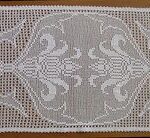If you are a beginning runner looking to improve your speed, you may have noticed that doing the same runs at the same speed, day in and day out, only improves fitness so much. Stress and adaptation is the key to getting faster, so you should have a weekly schedule with some “hard” days and some “easy” days. You can do fartlek runs (which I wrote about here) and some other types of runs, but the classic hard day consists of some good old fashioned intervals on the track. With that in mind, this article will focus on how you can use track workouts to take your running to the next level.
The first step, of course, is locating a track. Many high schools have tracks that are open to the public after school hours or on weekends. Colleges and Universities are the same. Some parks have public tracks as well. You should be able to find one relatively nearby.
After you’ve found your track, you should warm up. You may not always warm up for typical, “easy” runs, but for intervals and other “hard” workouts, you always should. Warm up jogging should be slow and easy, aimed only at loosening up and perhaps mentally preparing for the real workout ahead. You should warm up for about 5-15 minutes, or a half mile to mile and a half. Since the vast majority of standard tracks are 400 meters per lap on the inside lane, this would mean jogging 2 to 6 laps. I also recommend doing some light stretching before and/or after the warmup, depending on your preference.
Once you have stretched and warmed up sufficiently, you can begin your workout. A common interval workout for beginners and experts alike is the 400 meter repeat workout, so I recommend starting with this (I will explore other types of workouts in a future article). Obviously, in this workout you would be running one lap around the track hard, recovering for a short period of time, and repeating as necessary.
Now I’m sure the big questions you have at this point are: how fast do I run, and how do I recover? To answer the first question, you can actually use a variety of approaches. One is to go by heartrate. During a hard interval workout, your heart should beat at approximately 85% of your maximum heart rate. Your maximum heart rate, in turn, can be roughly estimated by subtracting your age from 220. So, if you are 35 years old, your heart rate during interval workouts should be: (220-35) x 85%, or approximately 157 beats per minute. To measure your heart rate, you can simply take your pulse for 15 seconds after the interval and multiply by 4 (since your heart rate will slow over the course of a minute). Or, if you like, you can invest in a heart rate monitor to wear during workouts.
If that sounds too complicated, don’t worry-measuring your heart rate isn’t absolutely necessary when doing an interval workout. You can simply estimate your perceived effort and proceed accordingly. When you are running an interval workout, you should be too winded to talk, but you shouldn’t be running “all out.” Keep in mind that a good interval workout is 6 400 meter intervals, and you should be able to complete them all in the same time or one gradually faster than the other. In other words, you should be working hard, but definitely not “struggling” during each interval.
The question of recovery is actually of some debate. For beginners it’s best to keep things simple by recommending an equal distance for recovery of one lap (400 meters). This should take you 2 to 3 minutes. This is probably longer than more seasoned athletes would recover for, but it’s important to start easy. As your fitness improves you can gradually cut down on the amount of time you recover.
As I said, as a beginner you should aim for 6 400 meter intervals, with 6 recovery laps in between, which is a total of 12 laps. 1600 meters is a little shy of a mile, so this workout is about 3 miles in length. And, again, you should start the workout “slow” and do each interval progressively a bit faster or at least the same speed. By the last interval or two, you should be having some difficulty completing them, but this will help you get mentally tough and improve your fitness tremendously. After you complete the workout, do a cool down jog just as you warmed up, along with some light stretching.
With that, congratulations–you’ve completed your interval workout! Make sure to refuel yourself within 20 minutes or so with some carbohydrates, perhaps in the form of a sports drink. More ideally you should consume something that contains both protein and carbohydrate, though, such as a smoothie made with skim milk, fruit, and yogurt.
Interval workouts can be grueling. If you’re just starting out, do only one per week, and make sure to take a recovery day the next day, with some light running or even cross training. Repeat for a month or two, and I can personally guarantee you’ll be in much better shape and faster than when you started.




